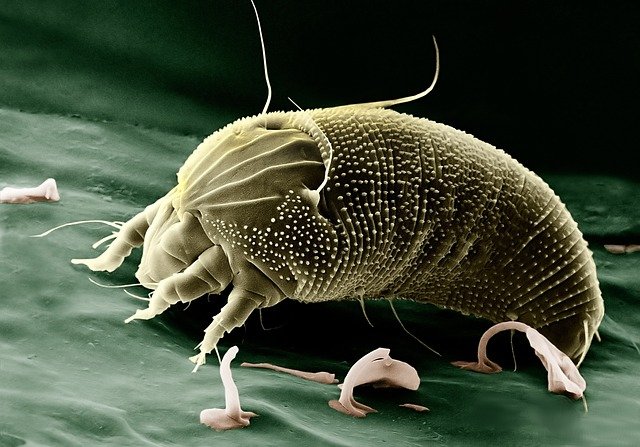The Enigmatic World of Tardigrades: Nature's Tiny Titans
Microscopic marvels with unparalleled resilience, tardigrades have captivated scientists and nature enthusiasts alike. These minuscule creatures, also known as water bears or moss piglets, possess extraordinary abilities that defy conventional understanding of life's limits. From surviving the vacuum of space to enduring extreme temperatures, tardigrades have become a subject of fascination and intensive research. This article delves into the fascinating realm of these microscopic superheroes, exploring their unique characteristics, remarkable survival mechanisms, and potential applications in various fields.

The Incredible Anatomy of Tardigrades
Tardigrades possess a unique anatomy that contributes to their extraordinary resilience. Their body consists of a head and four body segments, each equipped with a pair of stubby legs ending in claws. Despite their diminutive size, tardigrades have a complex internal structure, including a brain, nervous system, and digestive tract. Their most distinctive feature is the ability to replace water in their cells with a sugar called trehalose, allowing them to survive extreme dehydration.
The tardigrade’s outer layer, known as the cuticle, plays a crucial role in their survival. This flexible yet durable exoskeleton provides protection against physical damage and helps regulate water loss. Some species even possess pigments in their cuticle, offering protection against harmful UV radiation.
Cryptobiosis: The Secret to Tardigrade Survival
At the heart of the tardigrade’s incredible resilience lies their ability to enter a state of cryptobiosis. This remarkable process allows them to survive in conditions that would be lethal to most other organisms. When faced with environmental stressors such as extreme temperatures, high pressure, or lack of water, tardigrades can enter a dehydrated state called anhydrobiosis.
During anhydrobiosis, tardigrades expel almost all water from their bodies and curl up into a compact form known as a tun. In this state, they can withstand temperatures ranging from near absolute zero to over 150°C, pressures six times greater than those found in the deepest ocean trenches, and even the vacuum of space. Remarkably, tardigrades can remain in this suspended animation for decades, only to reanimate when conditions become favorable again.
Tardigrades in Extreme Environments
The adaptability of tardigrades to extreme environments has made them subjects of intense scientific interest. These creatures have been found thriving in some of the most inhospitable places on Earth, from the depths of the ocean to the peaks of the Himalayas. Their ability to survive in such diverse habitats has led researchers to study them as potential models for understanding life in extreme conditions, both on Earth and potentially on other planets.
In 2007, tardigrades became the first known animals to survive exposure to the vacuum of space. During the European Space Agency’s FOTON-M3 mission, dehydrated tardigrades were exposed to the harsh conditions of low Earth orbit for ten days. Upon return to Earth, many of these tardigrades successfully reanimated, demonstrating their remarkable space-faring capabilities.
Tardigrade Research and Its Applications
The unique properties of tardigrades have sparked interest in various fields of research, from astrobiology to medical science. Scientists are studying the molecular mechanisms behind tardigrade resilience, hoping to apply these insights to develop new technologies and treatments.
One area of particular interest is the potential application of tardigrade survival mechanisms in the preservation of biological materials. Researchers are exploring ways to use tardigrade-inspired techniques to improve the storage and transport of vaccines, organs for transplantation, and other sensitive biological samples. This could revolutionize medical logistics, especially in remote or resource-limited areas.
In the field of biotechnology, tardigrade proteins are being investigated for their potential to protect human cells from damage caused by radiation and desiccation. This research could lead to new treatments for cancer patients undergoing radiotherapy or the development of more effective sunscreens.
The Future of Tardigrade Studies
As our understanding of tardigrades grows, so does their potential impact on various scientific fields. Researchers are continually discovering new species of tardigrades, each with its own unique adaptations and capabilities. The study of these remarkable creatures is not only expanding our knowledge of life’s resilience but also challenging our understanding of the limits of biological adaptation.
Recent advancements in genomic sequencing have allowed scientists to delve deeper into the genetic basis of tardigrade survival mechanisms. This research could potentially lead to the development of new strategies for protecting crops from drought or creating more resilient materials inspired by tardigrade biology.
The field of tardigrade research, while still relatively young, is rapidly evolving. As technology advances and our ability to study these microscopic marvels improves, we can expect even more groundbreaking discoveries in the coming years. From space exploration to medical breakthroughs, the humble tardigrade may hold the key to unlocking new frontiers in science and technology.
In conclusion, tardigrades represent a fascinating intersection of biology, physics, and engineering. Their unparalleled resilience and adaptability continue to inspire scientists and capture the imagination of the public. As we delve deeper into the secrets of these tiny titans, we may find solutions to some of our most pressing challenges, from space exploration to medical preservation. The study of tardigrades serves as a powerful reminder of the incredible diversity and resilience of life on Earth, and the endless possibilities that arise when we look to nature for inspiration.





